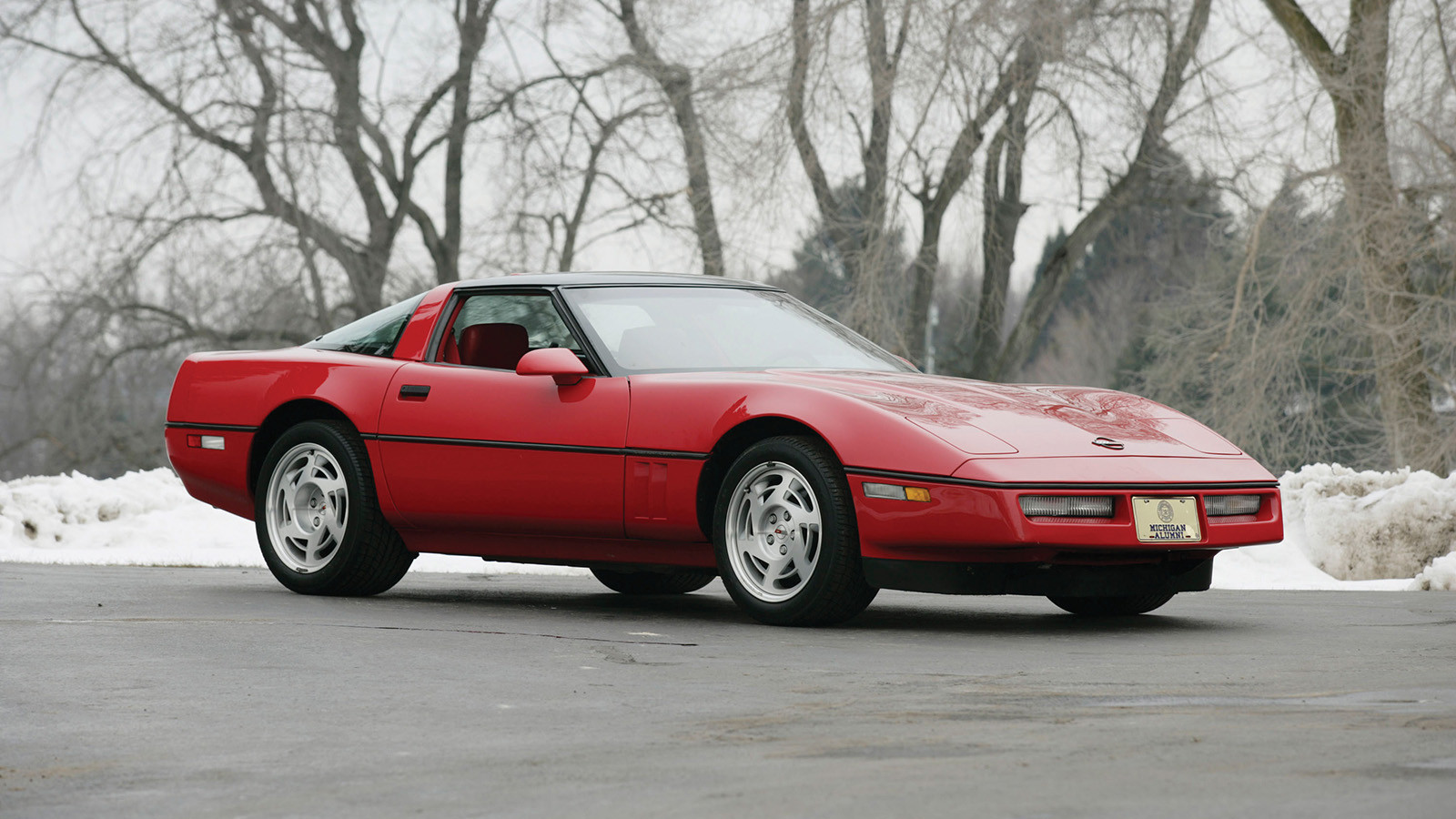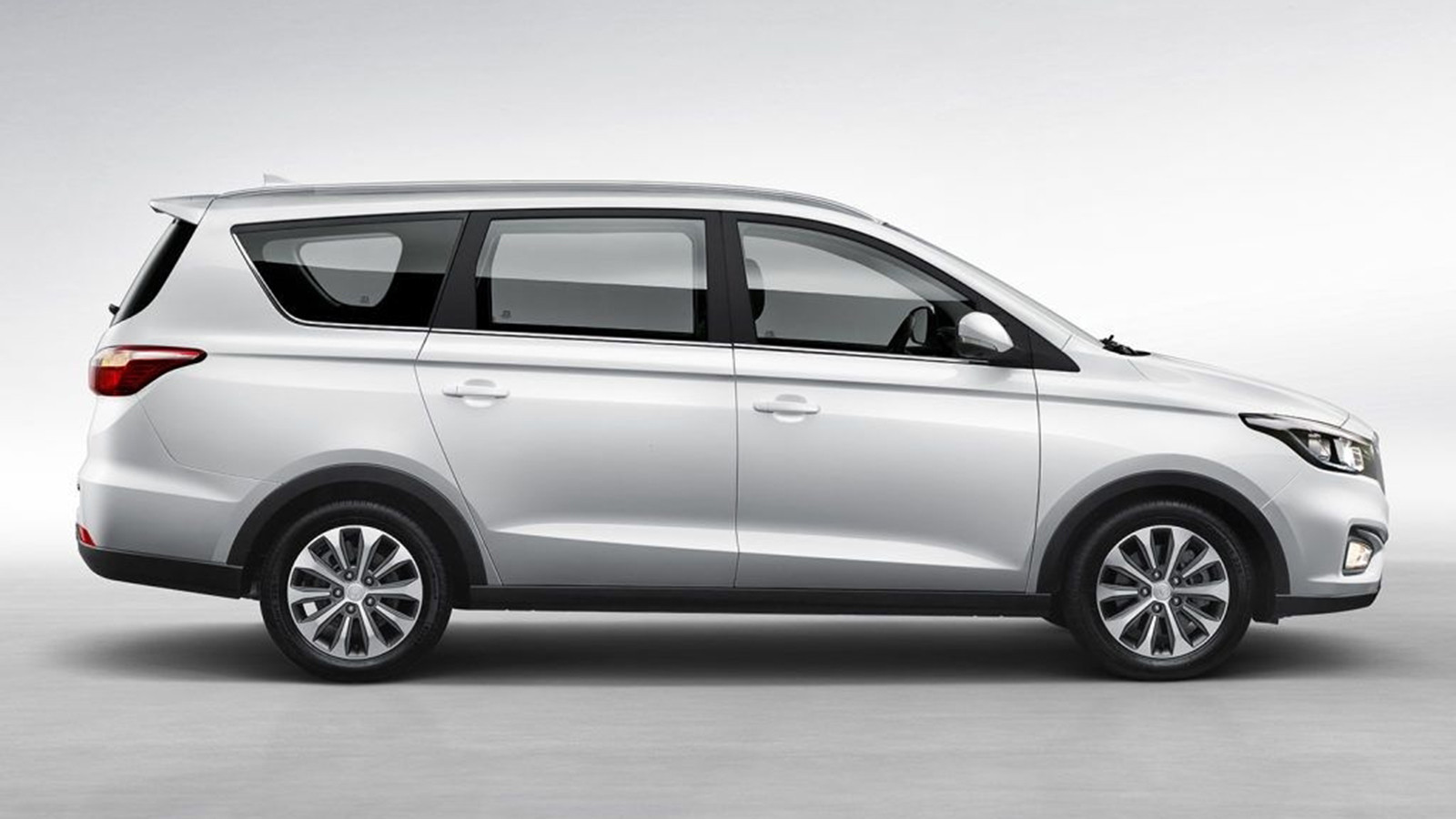-
 © Classic & Sports Car
© Classic & Sports Car -
 © Stellantis Media
© Stellantis Media -
 © Stellantis Media
© Stellantis Media -
 © proton.me
© proton.me -
 © Simon Clay/RM Sotheby’s
© Simon Clay/RM Sotheby’s -
 © Tim Wood/Rm Sotheby’s
© Tim Wood/Rm Sotheby’s -
 © Richard Heseltine
© Richard Heseltine -
 © Richard Heseltine
© Richard Heseltine -
 © RM Sotheby’s
© RM Sotheby’s -
 © Richard Heseltine
© Richard Heseltine -
 © Richard Heseltine
© Richard Heseltine -
 © RM Sotheby’s
© RM Sotheby’s -
 © Richard Heseltine
© Richard Heseltine -
 © Volkwagen AG
© Volkwagen AG -
 © Richard Heseltine
© Richard Heseltine -
 © Richard Heseltine
© Richard Heseltine -
 © Richard Heseltine
© Richard Heseltine -
 © RM Sotheby’s
© RM Sotheby’s -
 © Richard Heseltine
© Richard Heseltine -
 © Richard Heseltine
© Richard Heseltine -
 © Chris Rees
© Chris Rees -
 © RM Sotheby’s
© RM Sotheby’s -
 © Tom Giddens/RM Sotheby’s
© Tom Giddens/RM Sotheby’s -
 © Jaguar Land Rover
© Jaguar Land Rover -
 © Baojun
© Baojun -
 © Will Williams/Classic & Sports Car
© Will Williams/Classic & Sports Car -
 © RM Sotheby’s
© RM Sotheby’s -
 © Tom Haines/RM Sotheby’s
© Tom Haines/RM Sotheby’s
-
A helping hand from Hethel
Lotus has outlived most of its rivals and appears to be in rude health after more than 75 years.
And you could argue that exploiting its greatest asset – the company’s legendary brains trust – has long been a key ingredient behind its survival.
It has a rich, if variable, history of teaming up with other auto maker, the association leading to such legendary sporting fare as the Ford Lotus Cortina, the Sunbeam Talbot Lotus and the Vauxhall Lotus Carlton.
In such cases, the link with Lotus was broadcast to the world, the reflective cachet suiting all parties.
However, there were other collaborations where the link was rather less obvious, where Lotus was a subcontractor and there was little or no mention of the marque in terms of badging.
Gathered here is a selection of non-Lotus cars that received the Lotus touch. Some may be familiar, others conspicuously less so.
-
1. Dodge Spirit R/T
The Dodge Spirit R/T was an improbable performance weapon during its short-lived production run from 1991-’92.
Rooted in the oft-derided front-wheel-drive ‘K-car,’ Lotus created a 16-valve cylinder head for the existing turbocharged 2.2-liter four-cylinder unit.
The result was 227HP. That, and a top speed of just over 140mph.
-
2. Dodge Circuit EV
The Chrysler Corporation could, conceivably, have blazed trails with a battery-powered sports car via its Dodge subsidiary as far back as 2009.
The Lotus Europa S formed the basis for the EV (aka Dodge Circuit EV) concept car.
Depending on whose estimates you credit, it was some way along the road to becoming a production reality, only to be nixed by parent firm Fiat.
-
3. Proton Satria GTi
Proton’s rival for the likes of the Ford Focus ST and Renault Clio 2.0 16v Sport was infinitely better than preconceptions might have you believe.
The regular Satria’s naturally aspirated 1.8-liter 4G93P four-cylinder unit was tweaked to create the GTi (aka GTi 180), while the suspension – MacPherson struts up front and a multi-link system at the rear – was also polished and honed by Lotus Engineering.
-
4. Aston Martin Vanquish
Lotus uprooted goalposts via its Versatile Vehicle Architecture (VVA) system that comprised an alloy chassis ‘tub’ that was fashioned from extruded aluminum, which was then bonded and riveted.
The Norfolk-based firm was tapped to supply its VVA methodology and expertise in creating the Vanquish platform.
It was the first-ever front-engined car to employ such a method of construction.
-
5. Aston Martin DB9
The nature of confidentiality agreements is such that it’s hard to pinpoint just how much of the Aston Martin DB9 was the work of Lotus.
That said, the car’s chassis was absolutely, categorically, developed with ‘assistance’ from the brains trust in Hethel.
-
6. Rolls-Royce 102RX
Rolls-Royce has been synonymous with luxury and refinement since time immemorial. It doesn’t ‘do’ loud.
This prototype was typically profligate but there was a twist. Rolls-Royce announced the 102RX (aka Phantom Experimental Electric) concept car in 2011.
Lotus was responsible for the car’s battery powerpack, the end product proving eerily quiet, even by marque standards. That, and insanely fast.
-
7. Hyundai Genesis
Prior to it becoming a ‘premium’ sub-brand, the Genesis name indicated a Hyundai executive sedan.
Lotus was brought in to polish and refine the ride and handling set-up for the second-series model.
Another version of history suggests that Lotus Engineering merely evaluated the base car and made suggestions which Hyundai’s own engineers implemented.
-
8. Chevrolet Corvette ZR-1
General Motors acquired a 91% stake in Lotus in October 1986.
It then tasked its newest (and smallest) subsidiary with creating a supercar-crushing halo model.
The ‘King of the Hill’ Corvette ZR-1 employed a new Lotus-designed, aluminum-block, quad-cam, 32-valve V8 that produced a conservative 381HP (later 411HP).
Lotus also worked its magic on the suspension, alongside Bilstein.
-
9. Chevrolet Indy
Lotus and GM had collaborated on active-suspension programs as far back as 1982, systems being trialed on everything from a Lotus Esprit to a Buick Park Avenue.
This ultimately led to them co-operating on the Indy concept car that was intended to promote the US brand’s involvement in CART (IndyCar) racing.
Lotus also built the twin-turbo V8 employed in 1990’s Chevy CERV-III research vehicle.
-
10. Hindustan Ambassador
Lotus Engineering was hired to update Hindustan’s time-defying Ambassador model, itself rooted in a prehistoric Morris Oxford Series III.
The early 1990s reworking stretched to restyling the front end with varying degrees of success. The changes weren’t adopted for production, though.
-
11. Sinclair C5
Lotus Engineering designed, developed and built the C5 prototypes on behalf of a pre-knighthood Clive Sinclair.
It was responsible for creating the Y-shaped chassis and pre-production testing of the battery-powered trike.
-
12. Scorpion
This obscure Hillman Imp-engined device from the early 1970s was reanimated with flat-four Alfa Romeo power a decade later.
The gentleman behind the revival claimed in the media that it had been re-engineered by Lotus at his behest.
This marque revival vanished almost as quickly as it appeared, so we have our doubts.
-
13. Volkswagen GX3
Lotus developed the chassis for the Volkswagen GX3 concept car that was first seen in 2006.
It also reworked the trike design for manufacture in series, only for it to be canned due to product-liability fears.
It has also been suggested that Volkswagen pulled the plug because the suggested end price point would have rendered it prohibitively expensive.
-
14. Isuzu Piazza
The Isuzu Piazza was lauded for its Giorgetto Giugiaro-penned styling when it landed in the UK. The handling? Not so much.
To make matters worse, the British importer lurched into bankruptcy in 1986, but new concessionaire International Motors Group of West Bromwich got things back on an even keel a year later and engaged Lotus to sort the handling.
This UK-only variant wore ‘Handling by Lotus’ badges and remained on sale to the end of the decade.
-
15. Isuzu 4200R
The Isuzu 4200R was an Anglo-Japanese co-production that accommodated a Lotus-honed dohc 32-valve V8 amidships and active suspension.
This 1989 showstopper was subsequently upstaged by the Isuzu Como pick-up concept styled by Simon Cox, who had previously designed the interior for the Esprit X180.
It featured an Isuzu V12 engine originally earmarked for Formula One use.
-
16. MG Metro Turbo
Back in the early 1980s, Lotus Engineering worked with Austin Rover’s own engineers to perfect a forced-induction set-up for the prehistoric A-series four-cylinder unit.
Et voila, the MG Metro Turbo was introduced at the British International Motor Show in late 1982. Lotus was reputedly behind the suspension tweaks, too.
-
17. Toyota Supra
Where to start. Toyota was a shareholder in Lotus during the 1980s, but it could conceivably have owned the Norfolk auto maker in its entirety had fate been different.
Toyota used Lotus to establish the suspension set-up for the first-series MR2, and the Supra Mk2 and Mk3 (pictured), among others.
-
18. Volvo 480ES
Porsche and Lotus were both involved during the development of Volvo’s 480ES ‘sporty’ station wagon, but estimates vary as to what, precisely, constituted ‘involved’.
The former was allegedly engaged to work on the cylinder-head flow, while Lotus tweaked the suspension and braking set-ups.
-
19. Fiat
Strictly speaking, this car may, or may not, ever have existed. Also, this Elise spin-off with Fiat power was to have works Abarth badges – it was conceived ahead of the marque’s reanimation in 2008.
However, Fiat went with Dallara instead.
The end result was rebadged and re-engined and, after a much protracted gestation, became the Alfa Romeo 4C.
-
20. Bulgari
Unquestionably the most bizarre tie-up between Lotus and a manufacturer (that we know of…), didn’t involve a constructor of automobiles.
The Italian luxury brand, under the guidance of Gianni Bulgari, decided to enter the automotive arena in late 1988.
This oddball five-seater prototype employed M100 Elan-based front suspension, among other parts raided from the Hethel firm’s parts bin.
-
21. Spyker
This idiosyncratic Dutch marque revival enlivened the supercar arena during the early 2000s.
It engaged Lotus Engineering to assist in the development of various models, the Aileron and D8 4x4 among them (Spyker C8 Laviolette LM 85 pictured).
In 2008, it signed an agreement to use a new Lotus-built, Toyota-based engine in its B6 Venator, but it never entered production.
-
22. Land Rover Defender
Suspend disbelief for a moment, but long before the Elise came something that bit more… agricultural.
Lotus’ first experience of using extruded aluminum occurred when it built a series of Defender-based prototypes, when the brand was owned by BMW.
-
23. Jaguar Limo-Green
Lotus was a technology partner with this equally storied British auto maker via the Limo-Green project.
This hybrid XJ sedan proof of concept was a joint project between Jaguar Land Rover, Lotus, MIRA and Caparo, with the government’s Technology Strategy Board providing some funding.
Lotus also worked in partnership with Jaguar on the tragically stillborn CX-75 hypercar.
-
24. Baojun 730
This Chinese brand engaged Lotus Engineering to tune the suspension and perfect the ride for its crushingly orthodox 730 minivan.
Introduced in 2014, more than a quarter of a million were sold during the first 12 months.
-
25. Tesla Roadster
The first Tesla product was created in association with Lotus, the Roadster borrowing some of its architecture from the Elise.
However, Tesla itself was quick to play down the association. It stated in 2008 that there was only 7% carryover in regards to parts shared between both cars.
As to what constitutes ‘parts’, that remains open to debate.
-
26. De Lorean DMC-12
Perhaps the most famous (or infamous) marque associated with Lotus, the De Lorean DMC-12 was developed by Lotus Engineering at considerable cost to the British taxpayer.
The scandal of the black hole in which millions of pounds disappeared was never adequately resolved.
It continues to tarnish the reputation of Lotus’ talismanic founder, Colin Chapman.
-
27. Vauxhall VX220/Opel Speedster
Among the many Lotus Elise spin-offs, the Vauxhall VX220 (aka Opel Speedster) represented a win-win for the Norfolk brand.
This joint venture, in which Lotus developed this sports car for General Motors, meant it had sufficient funds to bring the then-new Elise to market, with which the Vauxhall/Opel car shared its basis.
Lotus also manufactured the GM model, ramping up production capacity at the firm’s site in Hethel.
